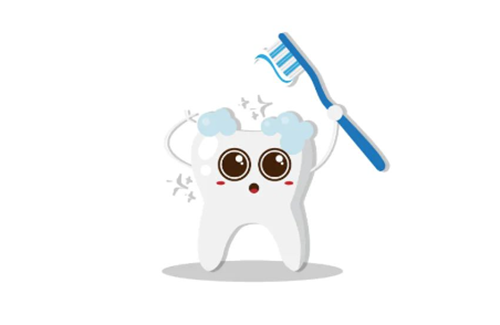Online Service
| Southern Service | |
| North Service | |
| Cooperation | |
| Care products | |
| international trade |
From: Shi Ye Date:2025-03-20 [BACK]
Oral health is an indispensable part of the growth process of children and adolescents. The health status of teeth directly affects children's diet, pronunciation, and even confidence. Dental caries, as a common oral problem, if not prevented and treated in a timely manner, may cause difficulties for children's healthy growth.
From the moment a child grows their first tooth, a comfortable and easy-to-use children's toothbrush should be prepared. Children's toothbrushes usually refer to toothbrushes used by children aged 14 and under. How to choose from so many toothbrushes on the market?

How to choose a toothbrush
1. Brush bristles
Choose soft, rounded bristles with no burrs, and the corresponding single filament diameter (nominal diameter) should not exceed 0.18mm to avoid damage to children's gums.
2. Brushing bristles
The head of a children's toothbrush should not be disassembled.
The child's oral space is relatively small, and a toothbrush with a small brush head can rotate flexibly to expand the cleaning range.
Generally speaking, the length of the bristles on the brush head should not exceed 2.9cm, which is about the width of two front teeth; The width of the hair surface should not exceed 1.1cm, approximately the width of one front tooth; The thickness of the brush head shall not exceed 6mm.
3. Handle
The total length of the toothbrush should be 11-18cm.
Young children who need parental help brushing their teeth can choose a slender toothbrush handle; Children can choose a thick or short handle to brush their teeth by themselves, which is beneficial for them to hold and use.
4. Safety requirements for toothbrushes
The head, handle, and decorative parts of the toothbrush should have a smooth appearance (except for special processes), no sharp edges, no burrs, clean without any odor, and should not discolor.
Toothbrushes produced in accordance with national standards should be purchased, and the products sold should have packaging that is clean and tidy inside and outside, free of dirt and cracks. When purchasing, attention should be paid to the product name, manufacturer name and address, product implementation standard number, single wire diameter, product quality inspection qualification mark and other information on the packaging.
Change the toothbrush every three months. In addition, once obvious wear, deformation or detachment of the bristles is found, they should be replaced in a timely manner to ensure the effectiveness of brushing.
5. Choose according to different ages
From 6 months to 2 years old: The baby teeth have already sprouted, and parents can use a finger brush or clean gauze dipped in warm water to gently wipe the gums, teeth, and tongue of the child. After the child gets used to it, they can switch to a soft bristled wide handled children's toothbrush.
2 to 4 years old: Choose a children's toothbrush with small soft bristles that is suitable for holding, cultivate children's habit of brushing their teeth by themselves, and choose a toothbrush with cartoon patterns according to children's preferences to increase their interest in brushing teeth.
From 5 to 7 years old: At this point, children begin to grow their first permanent molar. It is recommended to choose a toothbrush with slightly longer bristles at the end to better clean their teeth and mouth.
Over 8 years old: Choose a toothbrush with crossed bristles and end power bristles for better cleaning of teeth and mouth.

Official WeChat QR code
 400-820-8669(Working Hours 8:00~17:30)
400-820-8669(Working Hours 8:00~17:30) 18930521766
18930521766 kf@sy021.com
kf@sy021.com No. 308 Chunzhong Road, Minhang District, Shanghai
No. 308 Chunzhong Road, Minhang District, Shanghai